�
Optics
OPTICS
Learning by Computing,
with Examples
Using Mathcad®, Matlab®,
Mathematica®, and Maple®
Second Edition
K.D. M¨oller
With 308 Illustrations
Includes CD-ROM
With Mathcad
Matlab
Mathematica
123
�
K.D. M¨oller
Department of Physics
New Jersey Institute of Technology
Newark, NJ 07102
USA
M¨oller, Karl Dieter, 1927–
Optics: learning by computing with examples using MathCAD / Karl Dieter M¨oller.
p. cm.—(Undergraduate texts in contemporary physics)
Includes bibliographical references and index.
ISBN 0-387-95360-4 (alk. paper)
1. Geometrical optics—Data processing.
I. Title.
II. Series.
2. MathCAD. 3. Matlab. 4. Mathematica. 5. Maple.
QC381.M66 2002
535
0285—dc21
.32
2002030382
ISBN-13: 978-0-387-26168-3
e-ISBN-13: 978-0-387-69492-4
Printed on acid-free paper.
Mathcad is a registered trademark of MathSoft Engineering & Education, Inc.
© 2007 Springer Science+Business Media, LLC
All rights reserved. This work may not be translated or copied in whole or in part without the written permission
of the publisher (Springer Science+Business Media, LLC, 233 Spring Street, New York, NY 10013, USA),
except for brief excerpts in connection with reviews or scholarly analysis. Use in connection with any form
of information storage and retrieval, electronic adaptation, computer software, or by similar or dissimilar
methodology now known or hereafter developed is forbidden.
The use in this publication of trade names, trademarks, service marks, and similar terms, even if they are
not identified as such, is not to be taken as an expression of opinion as to whether or not they are subject to
proprietary rights.
9 8 7 6 5 4 3 2 1
springer.com
�
To
colleagues, staff, and students
of the
New Jersey Institute of Technology,
Newark, New Jersey
�
Preface
The book is for readers who want to use model computational files for fast
learning of the basics of optics. In the Second Edition, Matlab, Mathematica and
Maples files have been added to the Mathcad files on the CD of the First Edition.
The applications, given at the end of files to suggest different points of view on
the subject, are extended to home work problems and are also on the CD of the
Second Edition.
While the book is suited well for self learning, it was written over several
years for a one semester course in optics for juniors and seniors in science and
engineering. The applications provide a simulated laboratory where students can
learn by exploration and discovery instead of passive absorption.
The text covers all the standard topics of a traditional optics course, includ-
ing: geometrical optics and aberration, interference and diffraction, coherence,
Maxwell’s equations, wave guides and propagating modes, blackbody radiation,
atomic emission and lasers, optical properties of materials, Fourier transforms
and FT spectroscopy, image formation, and holography. It contains step by step
derivations of all basic formulas in geometrical and wave optics.
The basic text is supplemented by over 170 Mathcad, Matlab, Mathematica
and Maple files, each suggesting programs to solve a particular problem, and each
linked to a topic in or application of optics. The computer files are dynamic,
allowing the reader to see instantly the effects of changing parameters in the
equations. Students are thus encouraged to ask “what . . . if” questions to asses
the physical implications of the formulas. To integrate the files into the text,
applications are listed connecting the formulas and the corresponding computer
file, and problems for all 11 chapters are on the CD.
The availability of the numerical Fourier transform makes possible an intro-
duction to the wave theory of imaging, spatial filtering, holography and Fourier
transform spectroscopy.
vii
�
viii
PREFACE
The book is written for the study of particular projects but can easily be adapted
to a variation of related studies. The three fold arrangement of text, applications
and files makes the book suitable for “self-learning” by scientists and engineers
who would like to refresh their knowledge of optics. All files are printed out and
are available on a CD, (Mathcad 7) (Mathcad 2000) (Matlab 6.5) (Mathematica
4.1) (Maple 9.5) and may well serve as starting points to find solutions to more
complex problems as experienced by engineers in their applications.
The book can be used in optical laboratories with faculty-student interaction.
The files may be changed and extended to study the assigned projects, and the
student may be required to hand in printouts of all assigned applications and
summarize what he has been learned.
I would like to thank Oren Sternberg and Assaf Sternberg for the translation of
the files into Matlab, Mathematica and Maples, Prof. Ken Chin and Prof. Haim
Grebel of New Jersey Institute of Technology for continuous support, and my
wife for always keeping me in good spirit.
Newark, New Jersey
K.D. M¨oller
�
Contents
Preface
.
.
.
.
.
.
. .
1.1
1.2
1.3
1 Geometrical Optics
Introduction .
. . . . . . . . . . . . . . . . . . . . .
Fermat’s Principle and the Law of Refraction . . . . . . . . . . . . .
. . . . . . . . . . . . . . . . . . . . . .
Prisms .
1.3.1 Angle of Deviation .
. . . . . . . . . . . . . . . . . . . . .
Convex Spherical Surfaces
. . . . . . . . . . . . . . . . . . . . .
.
Image Formation and Conjugate Points . . . . . . . . . . . .
1.4.1
1.4.2
Sign Convention .
. . . . . . . . . . . . . . . . . . . . . .
1.4.3 Object and Image Distance, Object and Image Focus, Real and
1.4
. .
.
.
.
.
.
.
.
.
.
. .
. .
. .
. .
. .
. .
. .
vii
1
1
2
7
7
9
9
11
11
15
17
19
23
23
24
25
25
30
33
35
ix
Virtual Objects, and Singularities . . . . . . . . . . . . . . .
. .
1.4.4 Real Objects, Geometrical Constructions,
and Magnification .
. . . . . . . . . . . . . . . . . . . . . .
. .
1.4.5 Virtual Objects, Geometrical Constructions,
.
.
.
and Magnification .
. . . . . . . . . . . . . . . . . . . . . .
Concave Spherical Surfaces . . . . . . . . . . . . . . . . . . . . . .
Thin Lens Equation .
. . . . . . . . . . . . . . . . . . . . . .
1.6.1 Thin Lens Equation .
. . . . . . . . . . . . . . . . . . . . .
1.6.2 Object Focus and Image Focus . . . . . . . . . . . . . . . .
1.6.3 Magnification .
. . . . . . . . . . . . . . . . . . . . . .
1.6.4
Positive Lens, Graph, Calculations of Image Positions, and
Graphical Constructions of Images . . . . . . . . . . . . . .
1.6.5 Negative Lens, Graph, Calculations of Image Positions, and
Graphical Constructions of Images . . . . . . . . . . . . . .
1.6.6 Thin Lens and Two Different Media on the Outside . . . . .
. . . . . . . . . . . . . . . . . . . . . .
Optical Instruments
.
.
.
.
.
.
. .
. .
. .
. .
. .
. .
. .
. .
. .
. .
1.5
1.6
1.7
�
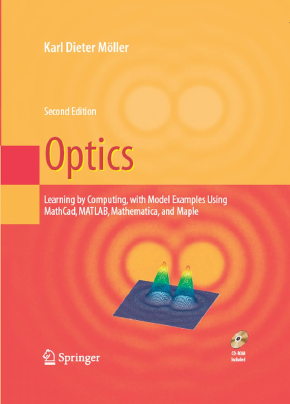

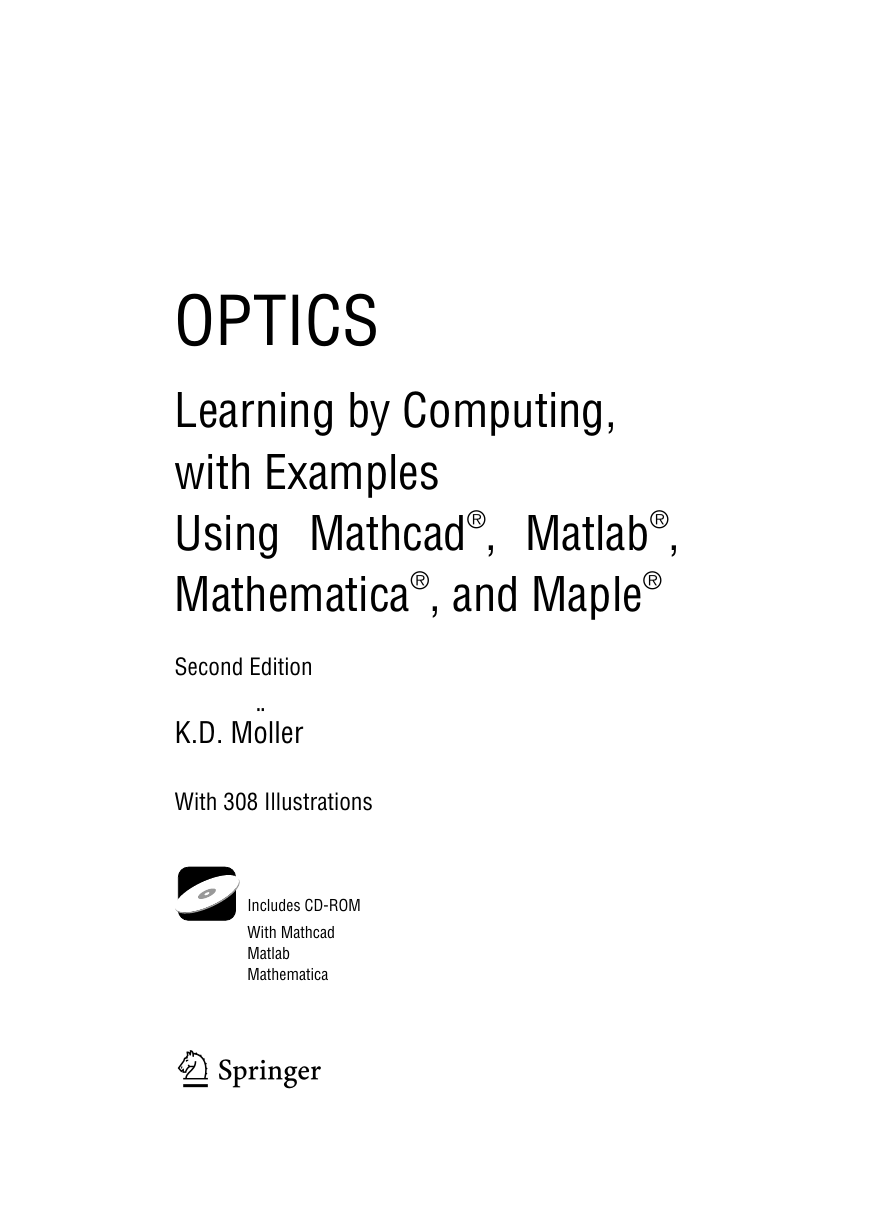
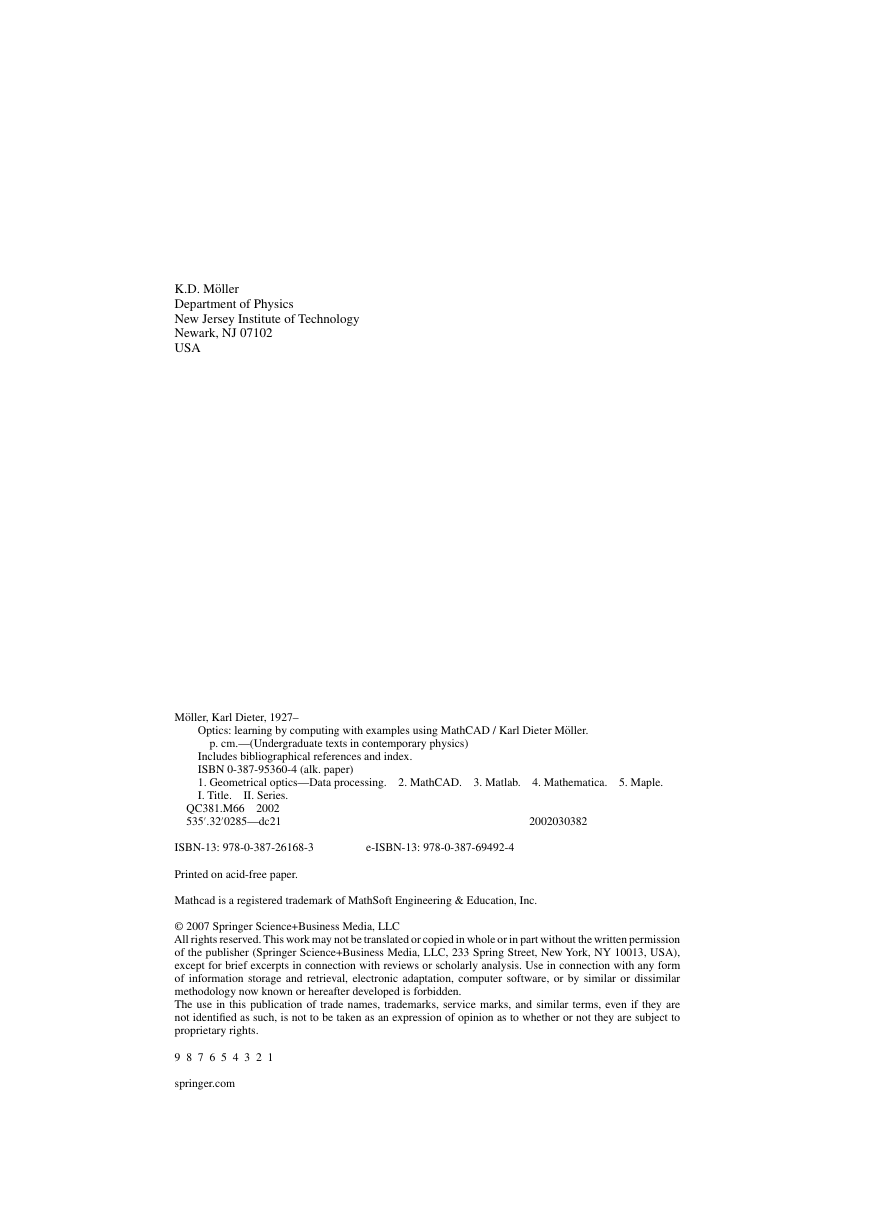

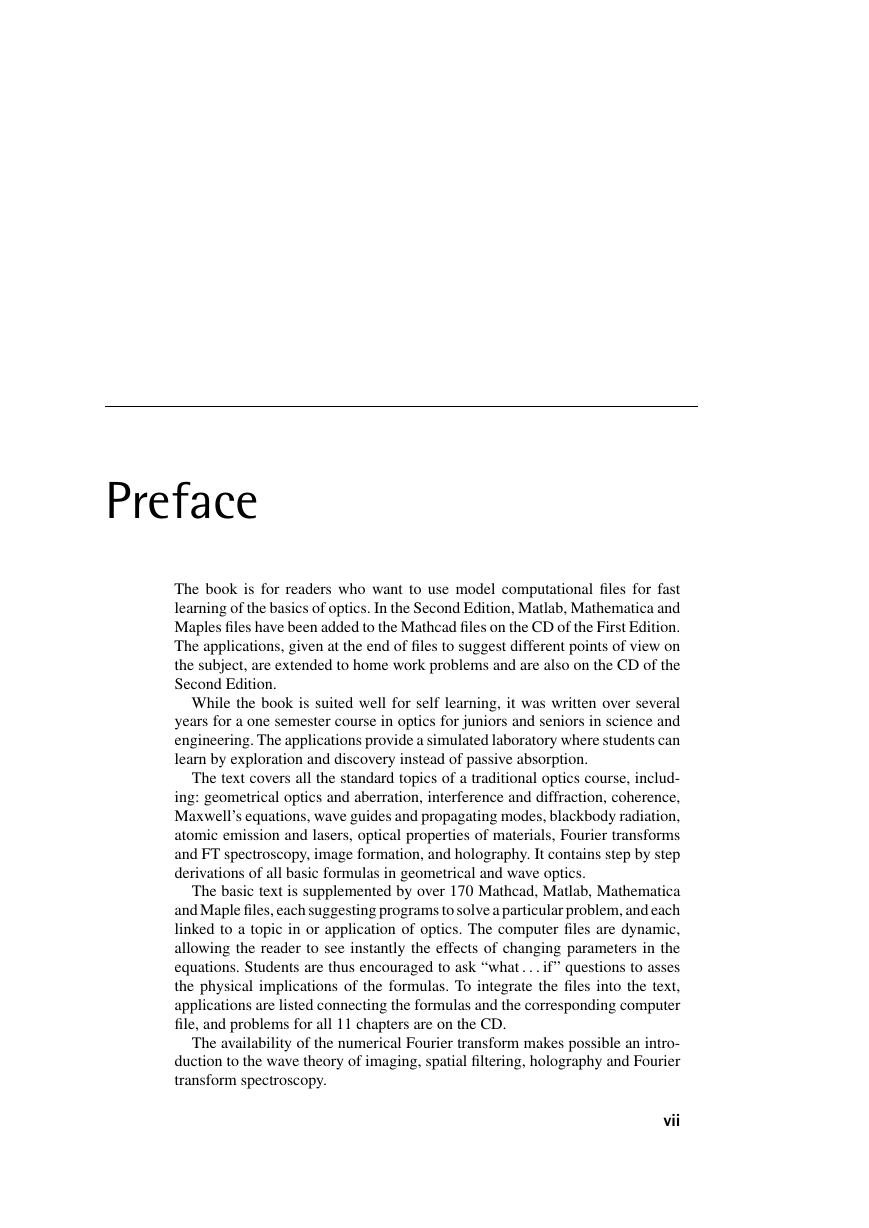
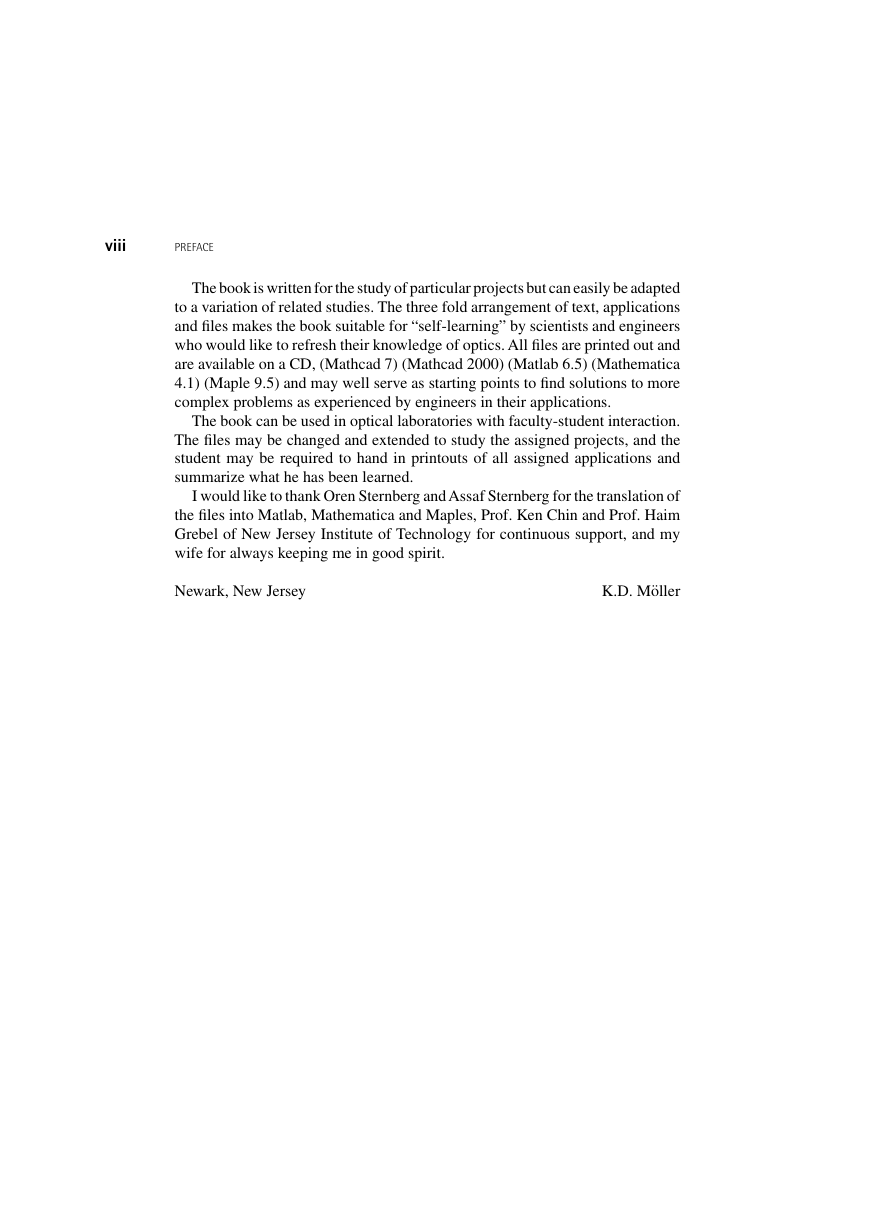
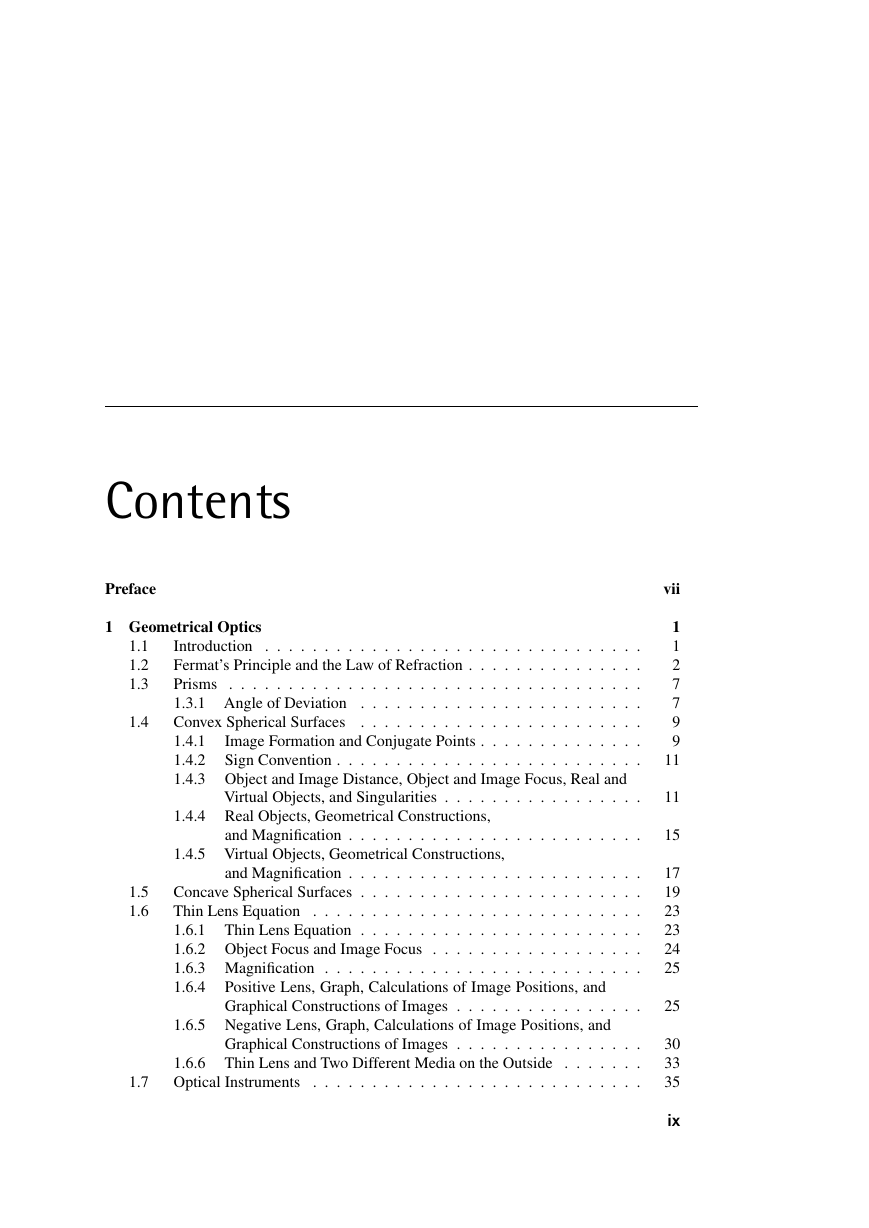








 2023年江西萍乡中考道德与法治真题及答案.doc
2023年江西萍乡中考道德与法治真题及答案.doc 2012年重庆南川中考生物真题及答案.doc
2012年重庆南川中考生物真题及答案.doc 2013年江西师范大学地理学综合及文艺理论基础考研真题.doc
2013年江西师范大学地理学综合及文艺理论基础考研真题.doc 2020年四川甘孜小升初语文真题及答案I卷.doc
2020年四川甘孜小升初语文真题及答案I卷.doc 2020年注册岩土工程师专业基础考试真题及答案.doc
2020年注册岩土工程师专业基础考试真题及答案.doc 2023-2024学年福建省厦门市九年级上学期数学月考试题及答案.doc
2023-2024学年福建省厦门市九年级上学期数学月考试题及答案.doc 2021-2022学年辽宁省沈阳市大东区九年级上学期语文期末试题及答案.doc
2021-2022学年辽宁省沈阳市大东区九年级上学期语文期末试题及答案.doc 2022-2023学年北京东城区初三第一学期物理期末试卷及答案.doc
2022-2023学年北京东城区初三第一学期物理期末试卷及答案.doc 2018上半年江西教师资格初中地理学科知识与教学能力真题及答案.doc
2018上半年江西教师资格初中地理学科知识与教学能力真题及答案.doc 2012年河北国家公务员申论考试真题及答案-省级.doc
2012年河北国家公务员申论考试真题及答案-省级.doc 2020-2021学年江苏省扬州市江都区邵樊片九年级上学期数学第一次质量检测试题及答案.doc
2020-2021学年江苏省扬州市江都区邵樊片九年级上学期数学第一次质量检测试题及答案.doc 2022下半年黑龙江教师资格证中学综合素质真题及答案.doc
2022下半年黑龙江教师资格证中学综合素质真题及答案.doc